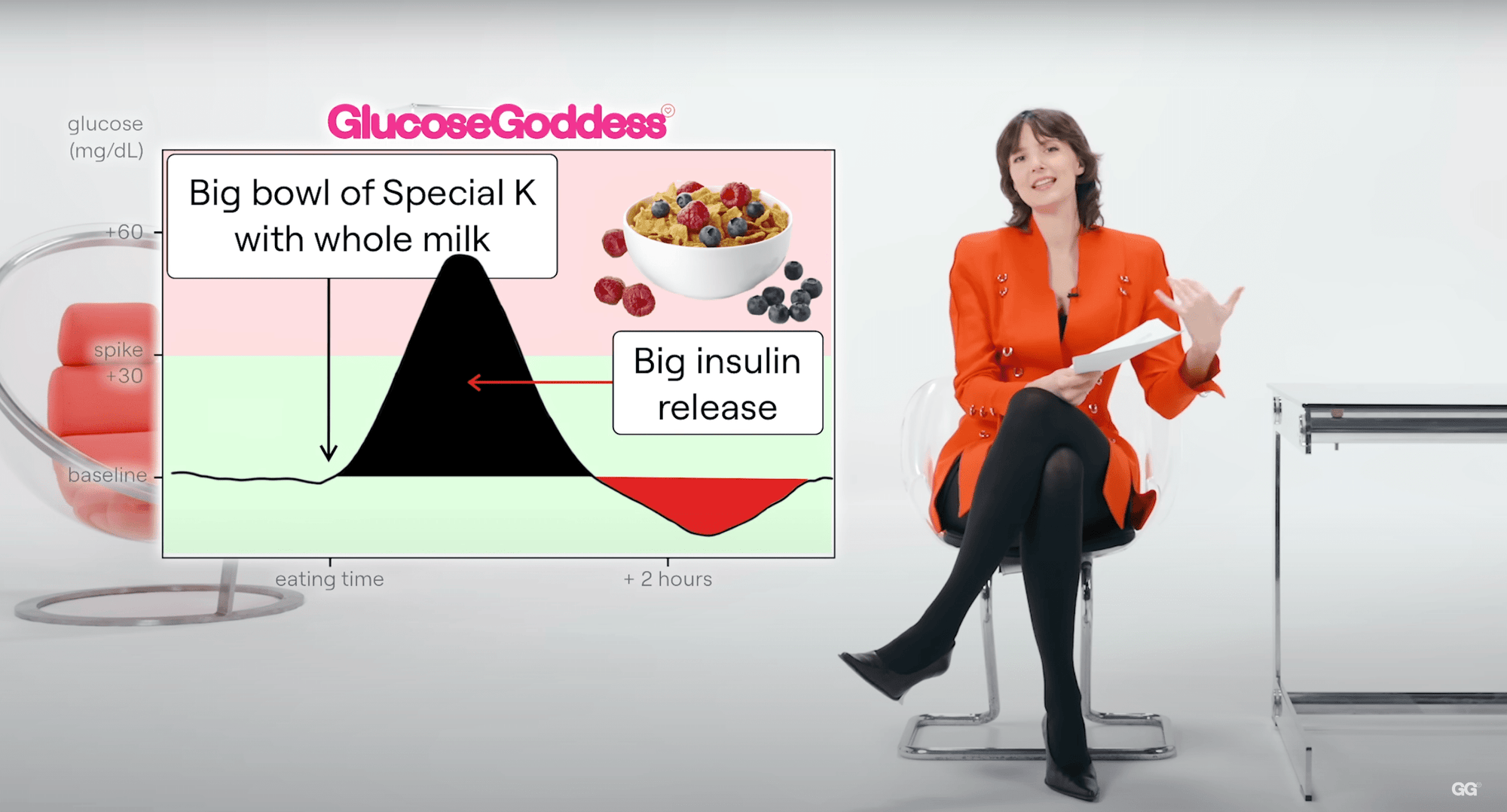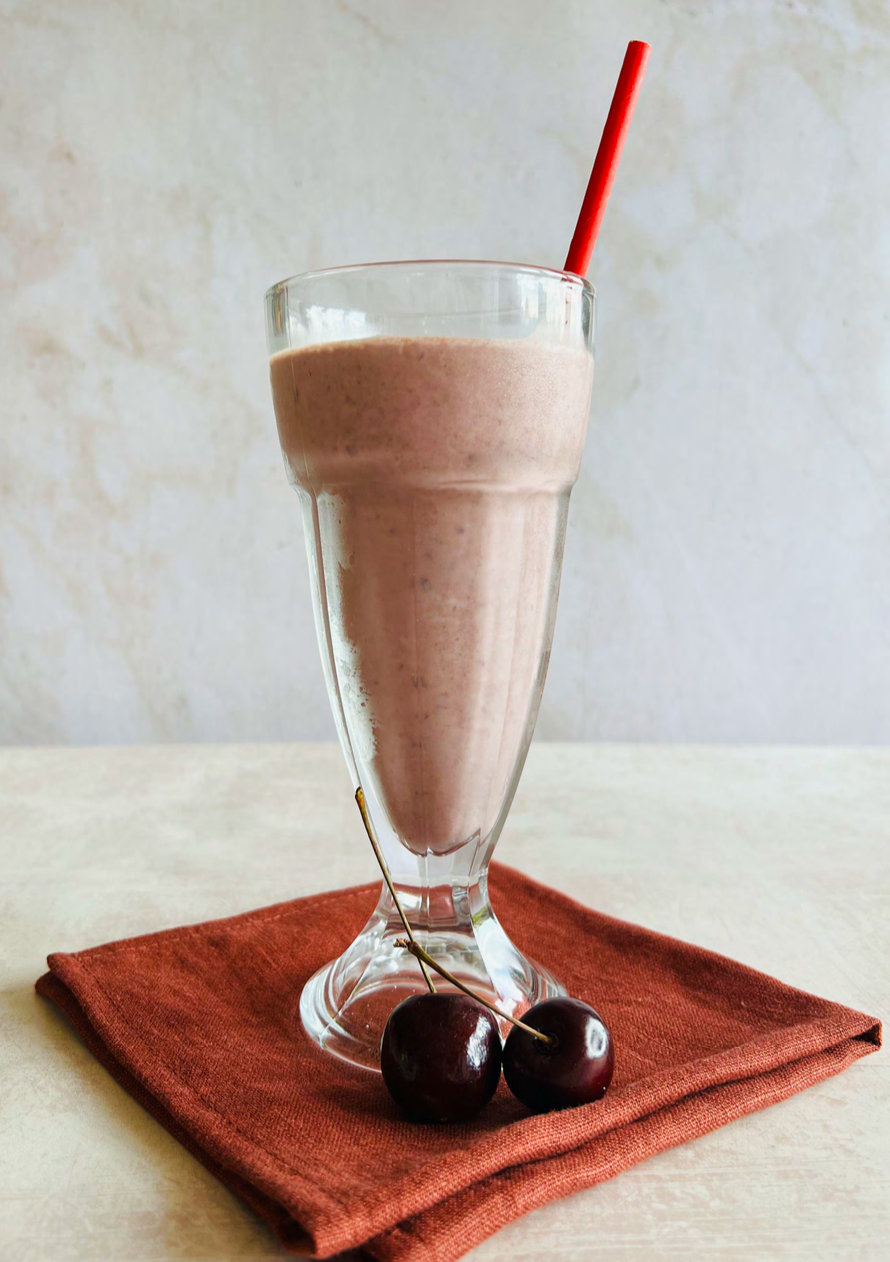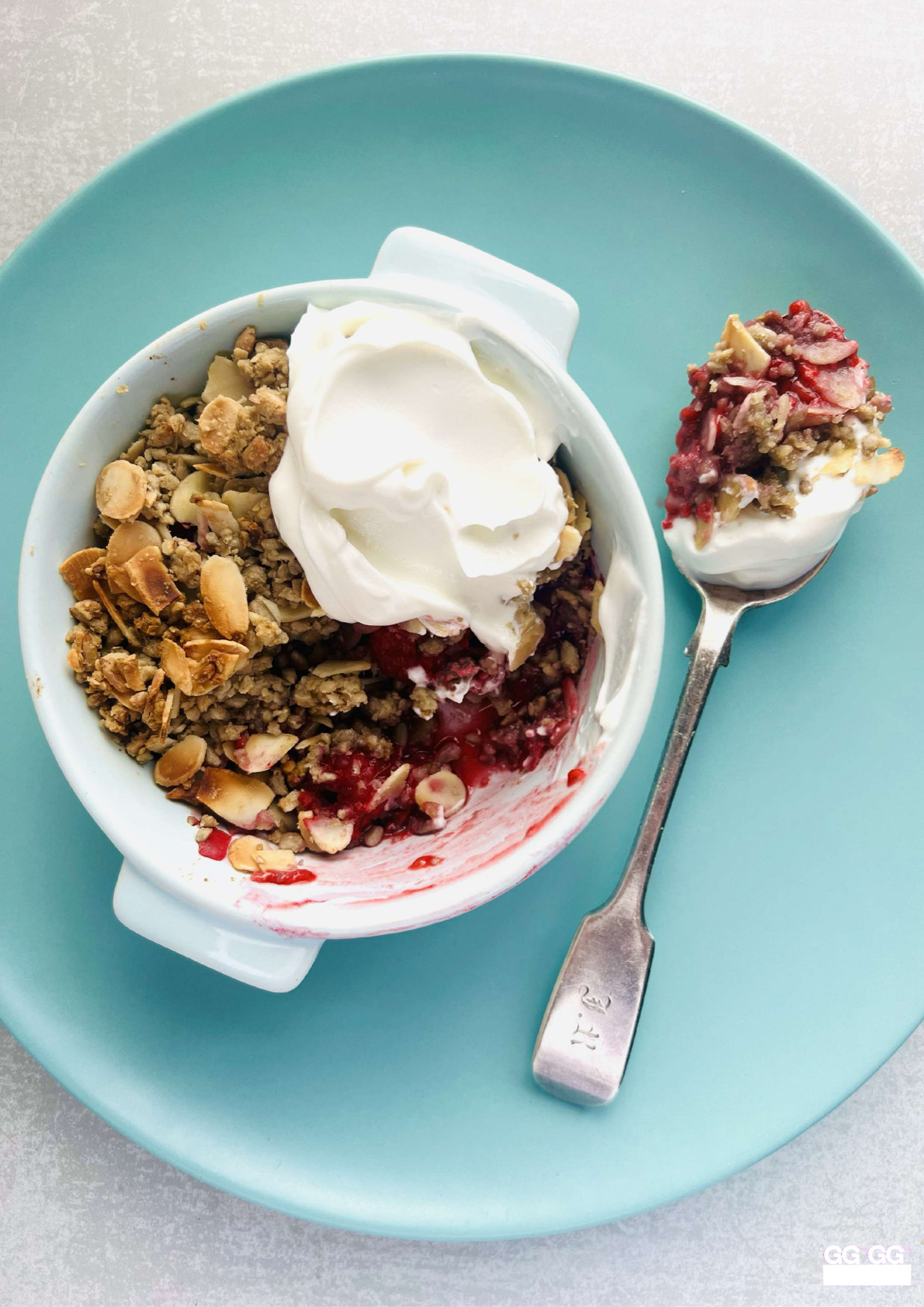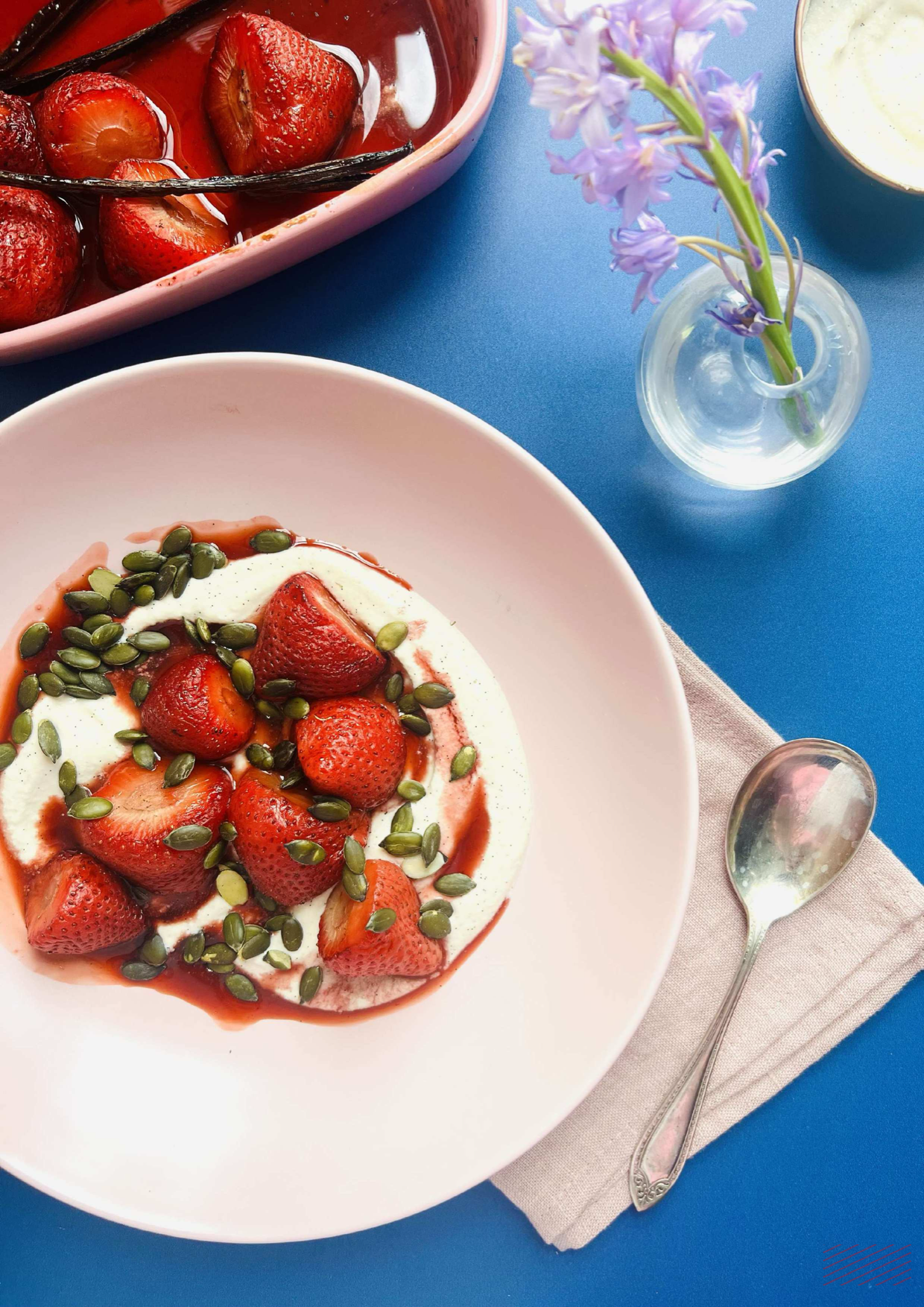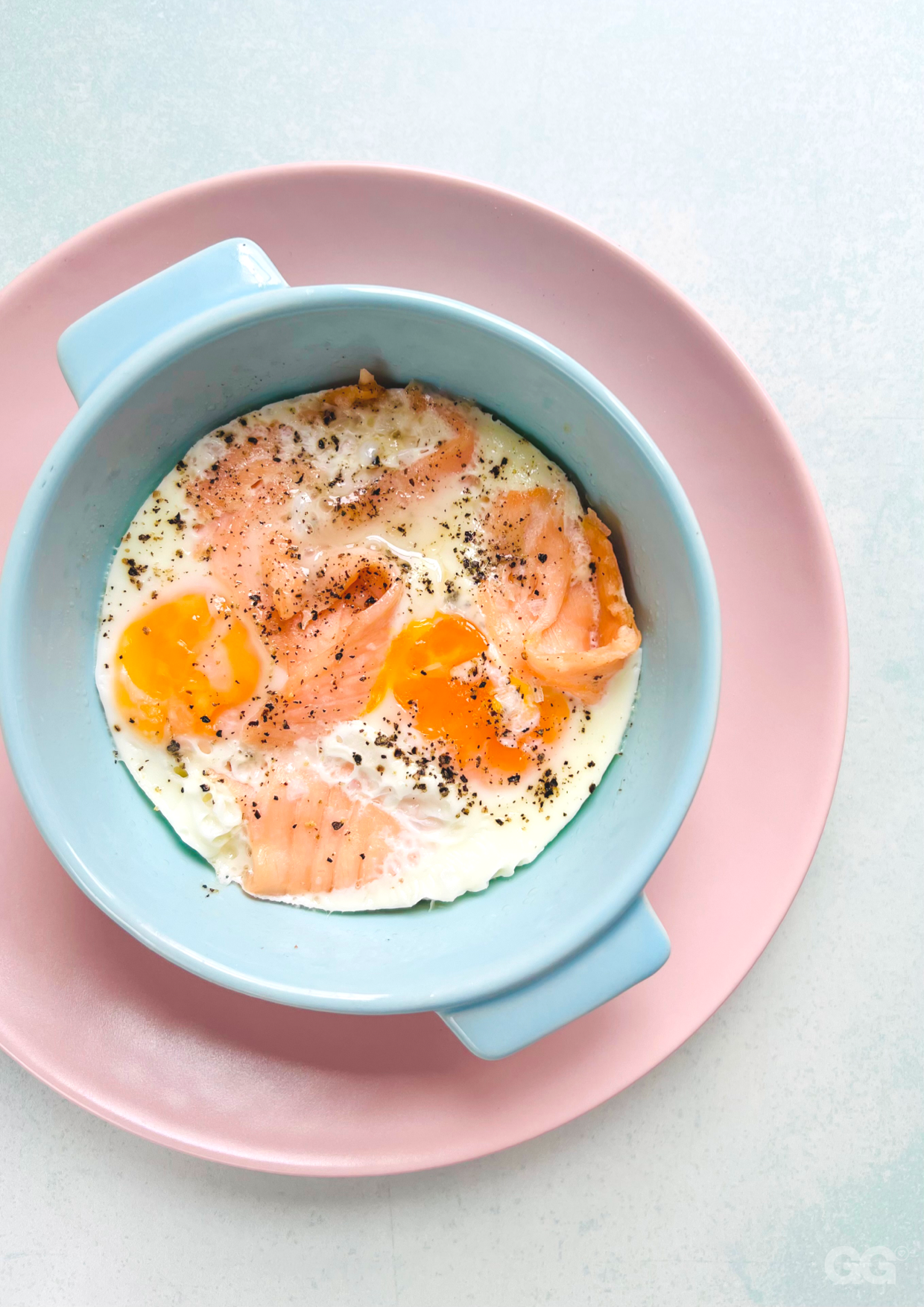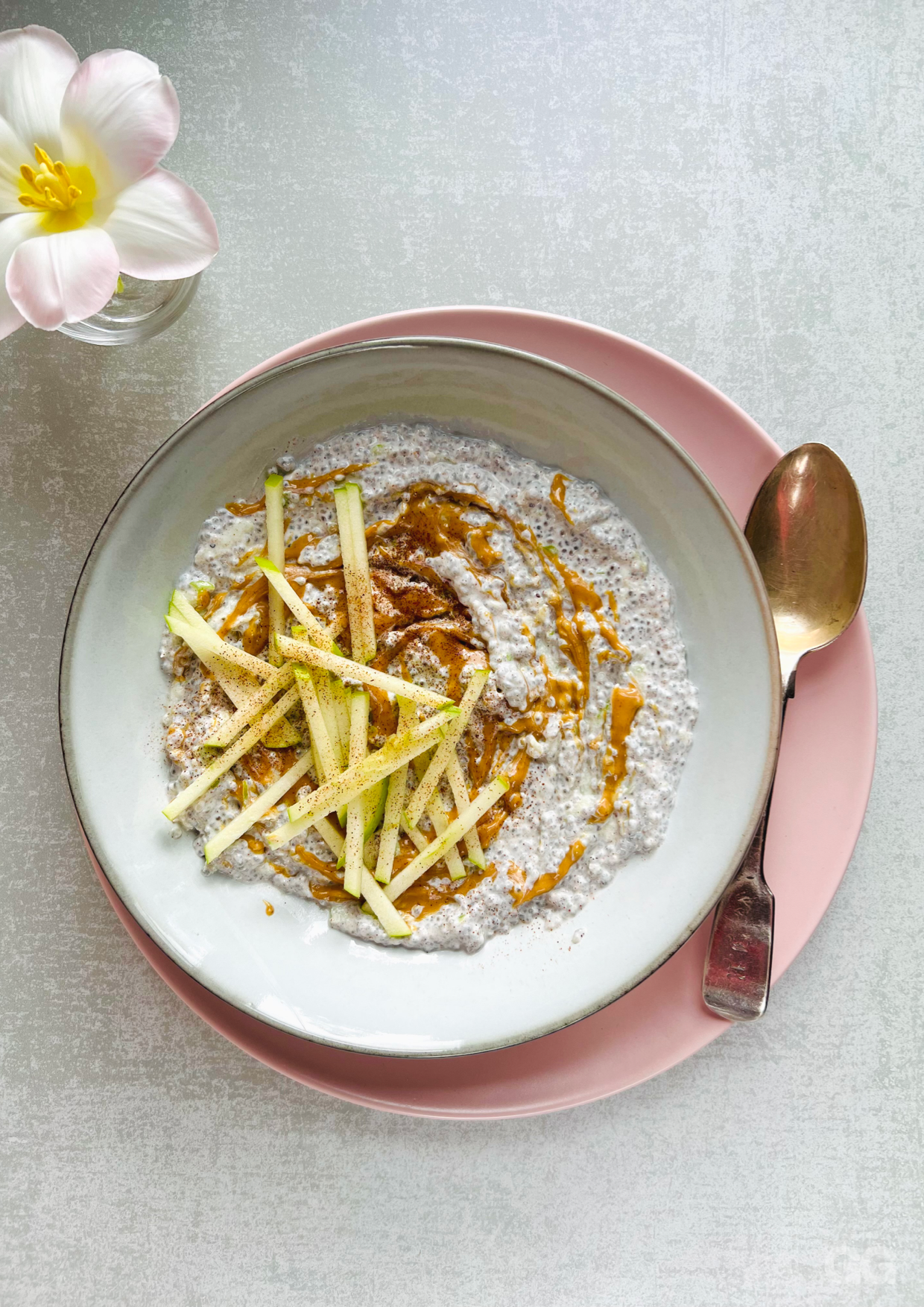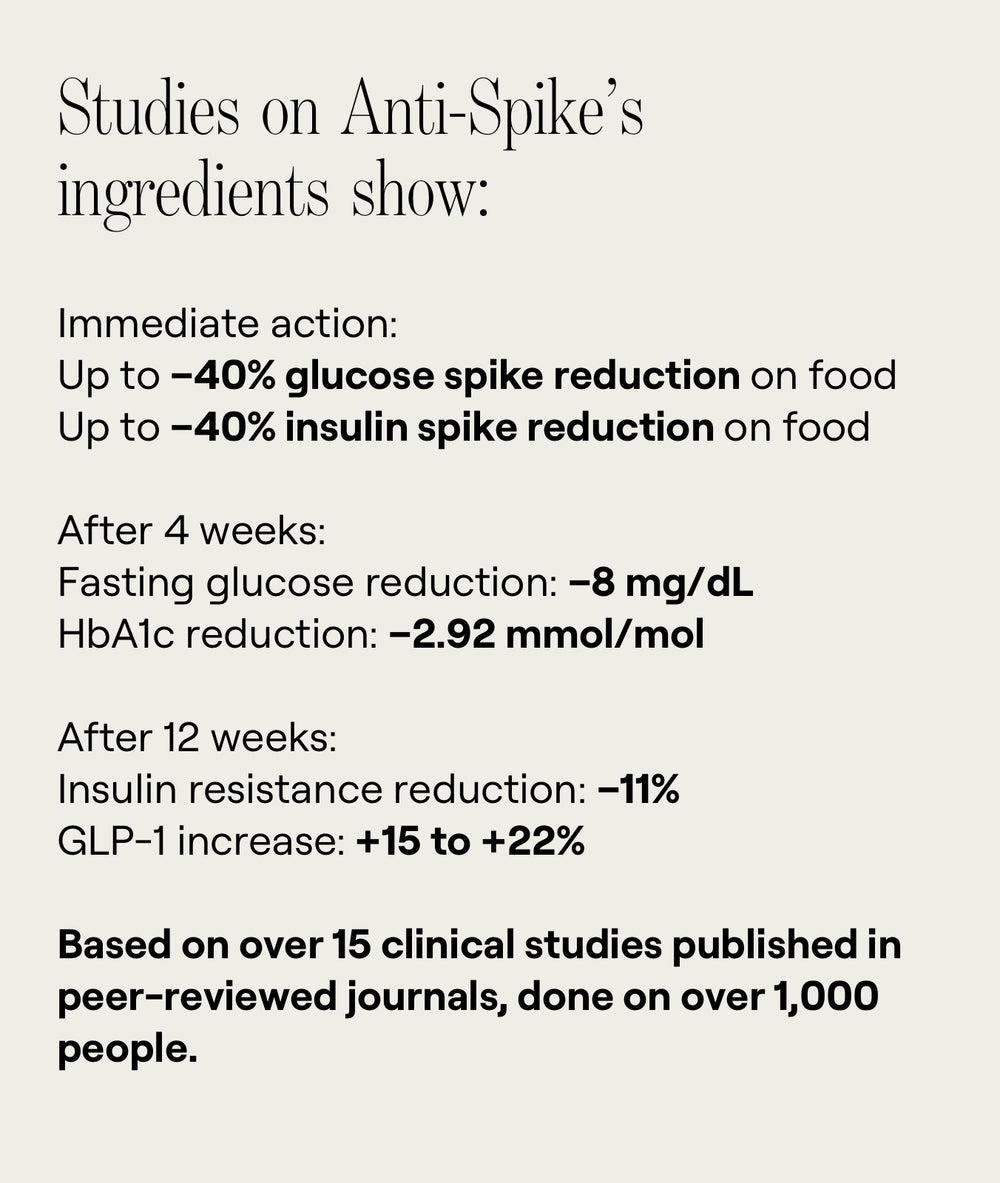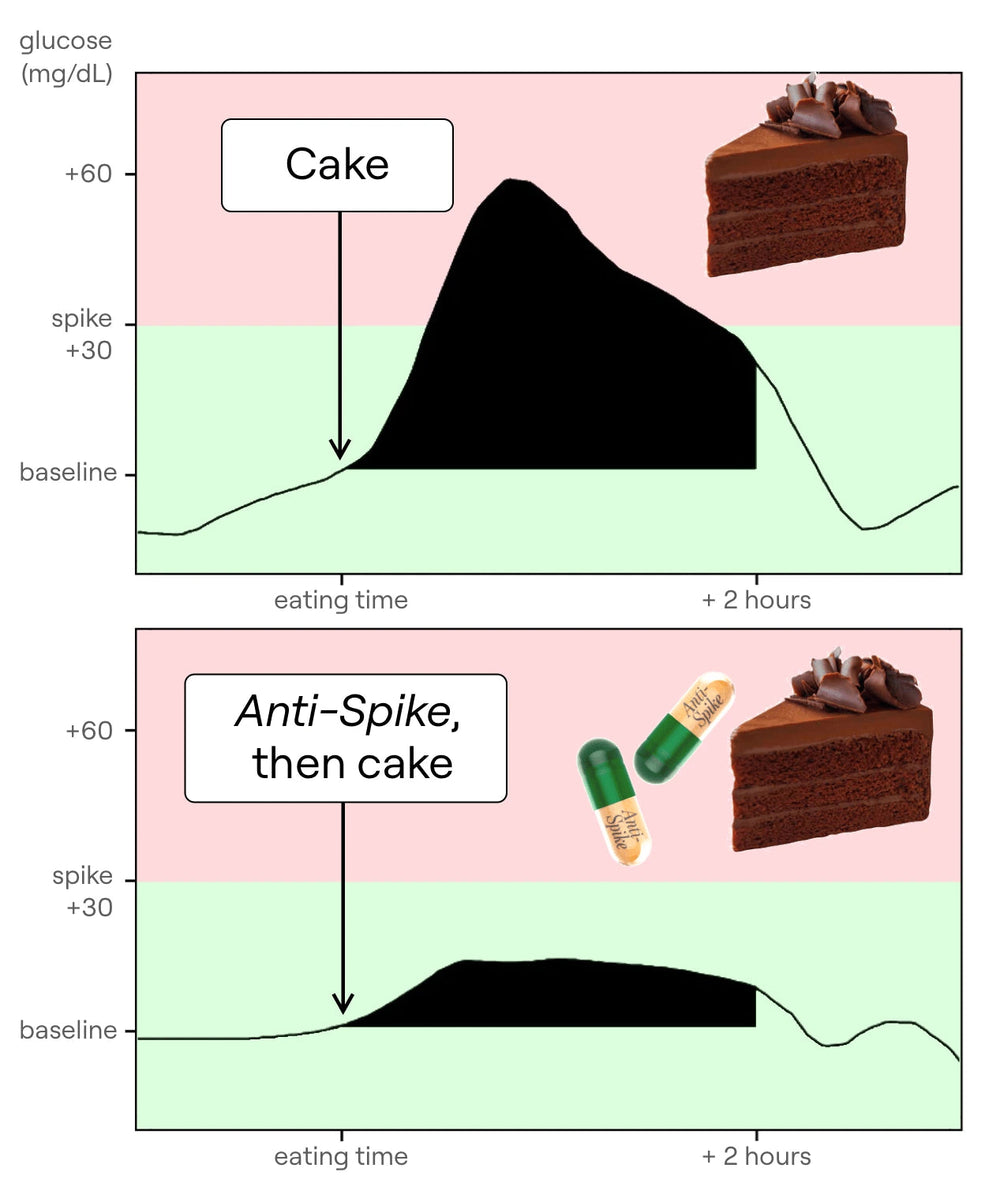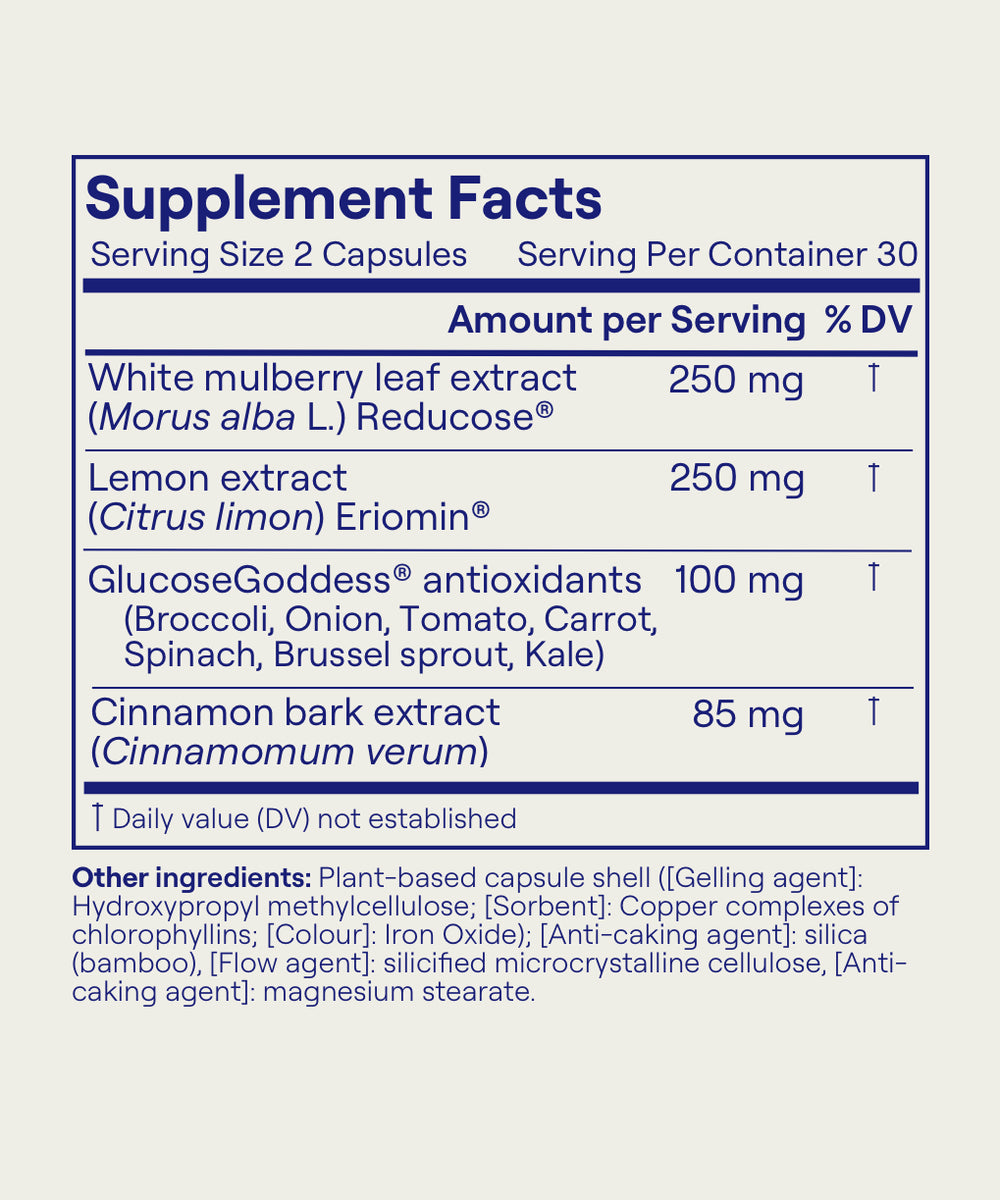SCIENCE EPISODE
The Big Breakfast Mistake That Wrecks Your Glucose (and Energy)
So, if you feel terrible at 5:00 p.m., your first thought is not going to be, “Oh, it’s because of my breakfast.” And because of this, most of us have gone our entire lives feeling like crap because of a bad breakfast, not knowing that they were correlated.
Hello angels, and welcome back to the Glucose Goddess Show. I’m Jessie Inchauspé, I’m a biochemist, and I want you to understand your body, your health, and food.
Today we’re going to talk about a very important topic — the topic of your breakfast. If you’re watching or listening to this video in the afternoon or in the evening, you might be surprised to hear that how you feel right now could actually be linked to what you had for breakfast earlier in the day, because breakfast controls us in ways that we don’t even understand — but you’re going to understand after watching this video.
One of the main issues with breakfast is that most of us today eat just starches or sugars in the morning. And I’m not talking about eating cakes or cookies for breakfast; I’m talking about cereal, granola, muesli, fruit smoothies, oats with honey and raisins, toast with jam, fruit juices. Most of us, even when we think we’re eating something healthy, are actually just giving our body a large amount of glucose first thing in the morning. And when I say “most of us,” I mean most of us.
For example, according to US census data and the national consumer survey, almost three billion cereal boxes are sold each year, and over 60 million Americans eat Honey Nut Cheerios every day — a very high-sugar cereal. So, yes, most of us are eating a lot of sugar and starches in the morning. Even if you think your granola and smoothie are healthy, they’re not — and learning this will completely change your life, because you’ll stop making the breakfast mistakes we all make. When we eat something high in starches and sugars in the morning, two main things happen in our body. The first happens in our brain: sweet taste activates dopamine, which gives that “rush” or “energy” feeling — but dopamine isn’t energy, it’s pleasure. Sugar releases the same molecule that’s released when we have sex, play video games, or use drugs. It makes us feel good, but it’s not actual fuel. Meanwhile, the mitochondria — the organelles that create energy — are overwhelmed by this rush of sugar. Normally, mitochondria convert food into energy so you can work, move, play, and live, but under a big glucose load they get stressed out, go on strike, and can’t make energy properly.
Over time, you exhaust your mitochondria and become chronically fatigued. Regular stress becomes harder to handle, energy is depleted, and you feel terrible. There’s a study called “The Spectrum of Exercise Tolerance in Mitochondrial Myopathies: A Study of 40 Patients,” which shows that the more exhausted the mitochondria are, the less people can walk, move, or work. Keeping mitochondria healthy is crucial. When we overload them with sugars in the morning, they can’t function properly — and we become chronically tired. So that’s the first trap of sugary breakfasts: we think we’re getting energy, but it’s just a short-lived dopamine rush, while our cells are actually breaking down.
But there’s more. Time for a quick break to tell you about the supplement I have developed: Anti-Spike Formula. In my years of research, I’ve understood one key thing — keeping glucose levels steady is the foundation of physical and mental health. If I could only take one supplement to reduce glucose spikes and keep levels steady, it would be Anti-Spike Formula. I created it with two powerful natural plant molecules. The first is mulberry leaf extract — in a review of 12 clinical trials on 600+ people, it was found to reduce glucose spikes by up to 40%, insulin spikes by up to 40%, and fasting glucose by 8 mg/dL after just two months. The second is eriocitrin from lemon — it helps your gut produce more GLP-1, which improves glucose levels. I take two capsules daily before my highest-carb meal. Go to anti-spike.com to see the science, testimonials, and order your own.
Now, back to breakfast: it’s not just dopamine and energy that are influenced by your morning meal — the rest of your day is too. Let’s say you stub your toe at 8 a.m.; you’ll know all day that you’re grumpy because of that. But breakfast effects are slower — metabolic processes take hours to unfold, so when you feel awful at 5 p.m., you’ll never think to blame your breakfast. That’s why most of us go through life feeling bad without realizing breakfast is the cause. To understand this, let’s revisit glucose spikes. When we eat carbs and sugars, they turn into glucose, enter the bloodstream, and raise blood glucose levels. Big increases cause “glucose spikes.” Breakfast foods — cereals, smoothies, oats — tend to cause the biggest spikes of the day. Why does this matter? Because glucose spikes trigger inflammation, aging, and insulin release.
Then comes the crash: two to three hours later, your blood sugar drops rapidly, leading to cravings, hunger, fatigue, irritability, and low energy. These crashes, combined with mitochondrial stress, make us feel awful. The most common symptoms are sugar cravings, excessive hunger, and fatigue.
So, if you want fewer cravings, more energy, and better satiety, learning to manage glucose spikes is key. Here are examples of common breakfasts that cause massive spikes: oats with honey (huge spike); Special K cereal (huge spike); muesli with fruit juice (huge spike); and toast with jam (pure starch and sugar). Most of us are starting our days with sugar and starch, which sets us up for fatigue and cravings later. When you feel tired, crave sweets, or feel moody, breakfast is often to blame. And since breakfast is eaten on an empty stomach, glucose from those foods hits your bloodstream faster — making breakfast the worst possible time to eat sugars and starches. If you’re unsure whether your breakfast is causing spikes, check my food classification master list (linked in the episode description); it shows which foods spike glucose and which don’t. If your breakfast includes fruit juices, cereal, oats, honey, or smoothies, you’re likely spiking. Another study shows that high-carb breakfasts reduce available energy throughout the day. In this graph: red = high-carb meal, green = medium-carb, blue = low-carb. Even with the same calories, high-carb meals lead to less energy available after 2 hours. The more carbs, the less stable and available energy your body has — because after a spike, your body clears glucose from the blood too aggressively. So the idea that “sugar gives you energy” is false. It’s marketing. Sugar for breakfast doesn’t give energy; it drains it.
Another study called “Return of Hunger Following a Relatively High-Carbohydrate Breakfast Is Associated with Early Recorded Glucose Peak and Nadir” shows that big glucose spikes make you hungry again sooner, due to rapid drops and deregulated hunger hormones. If you get hungry less than four hours after breakfast, your breakfast caused a big spike. You should feel full for at least four hours — and with my hack, you will. Another study, “Restricting Carbs at Breakfast Is Sufficient to Reduce 24-Hour Exposure to Postprandial Hypoglycemia and Improve Glycemic Variability,” shows that a steady-glucose breakfast keeps glucose stable for the rest of the day. If you spike at breakfast, your glucose stays unsteady all day.
Breakfast controls your hunger, cravings, energy, brain fog, inflammation, hormones, sleep, fertility, and long-term risk of disease. A sugary breakfast sets you up for a roller coaster of energy and emotions.
So, what’s the solution? Have a savory breakfast. This will solve everything that a glucose-spiking breakfast causes. The core of your breakfast should be protein — eggs, fish, meat, yogurt, dairy, tofu, lentils, or nuts. Protein doesn’t cause glucose spikes and keeps you full. In fact, your body will keep you hungry until you give it enough protein — this is called the protein leverage hypothesis. Add healthy fats and veggies like spinach, avocado, or olive oil. Starches and fruits are optional — small sides for pleasure, not the base.
For example, three eggs on toast is fine; the toast is optional, not essential. For fruits, always eat them whole, never juiced, blended, or dried — juicing removes fiber and concentrates sugar, causing spikes. Whole fruits like oranges, bananas, peaches, or berries are fine in their natural form. And never add anything else sweet: no juices, smoothies, granola, cereal, dried fruit, jam, cookies, or cakes. If this feels like a big change, take it step by step. Start by adding protein — like three eggs before your oats with honey — and gradually transition to a fully savory breakfast. Examples of quick savory breakfasts: Greek yogurt with nuts; a bagel with cream cheese and salmon (bagel optional); avocado toast with eggs (avocado alone = fat, not protein, so add eggs); cooked options like omelets with tomatoes and feta (my favorite); or leftovers from dinner — lentils, chicken, etc., sautéed with eggs. If giving up sweetness is hard, have your sweet item at the end as a “breakfast dessert”; the glucose spike will be smaller.
Common questions: smoothies — only okay if they include protein, fat, and fiber; avoid all-fruit smoothies. Fasting — if you skip breakfast and eat your first meal at 2 p.m., that’s still your “breakfast,” so make it savory. Timing doesn’t matter; composition does. I also have a full episode on intermittent fasting if you’re curious.
If you want breakfast ideas, there’s a free PDF in the episode description with savory breakfast recipes — some of my favorites.
In conclusion, my dears, we have to stop making the big breakfast mistake of eating just sugars and starches. If you want steady glucose levels, more energy, fewer cravings, better hormones, less inflammation, and improved mental health, a savory breakfast is the place to start.
For years, I had sugar in the morning without realizing it was making me hungry by 10 a.m., tired, and more anxious or depressed later in the day. I was able to link breakfast glucose spikes to worsened dissociation, anxiety, and depression that I had struggled with for years. Changing my breakfast completely changed my life — it feels like stepping into a new version of yourself. Build your breakfast around protein, with fats and fiber, optional starches and whole fruit, and avoid all added sugar.Try it tomorrow and notice how different your day feels. Let me know how it goes.
Free resources in the episode description: my food classification list (what’s a starch, sugar, protein, fat, fiber), free savory breakfast recipes, and my one-pager of 10 glucose hacks.
Savory breakfast is the most important hack — but the other nine will also help you feel amazing.
Thank you for watching, and I’ll see you next time.
 Anti-Spike Supplement
Anti-Spike Supplement
 The Recipe Club
The Recipe Club
 Course
Course
 50 Breakfast Recipes
50 Breakfast Recipes
 50 Veggie Starter Recipes
50 Veggie Starter Recipes
 20 Vegan Recipes
20 Vegan Recipes
 20 Gluten-Free Recipes
20 Gluten-Free Recipes
 The 10 Glucose Hacks
The 10 Glucose Hacks
 Vinegar
Vinegar
 Alcohol
Alcohol
 Fasting
Fasting
 GLP-1
GLP-1
 What to Eat Before & After Exercise
What to Eat Before & After Exercise
 Protein
Protein
 PCOS
PCOS
 Menopause
Menopause
 My MRI Story
My MRI Story
 Breakfast
Breakfast
 Supplements
Supplements
 Clothes on Carbs
Clothes on Carbs
 Eggs & Cholesterol
Eggs & Cholesterol
 Chocolate
Chocolate
 Food Labels
Food Labels
 Veggie Starters
Veggie Starters
 Move After Eating
Move After Eating
 Why Glucose Matters
Why Glucose Matters
 Glucose Revolution Book
Glucose Revolution Book
 The Glucose Goddess Method Book
The Glucose Goddess Method Book


